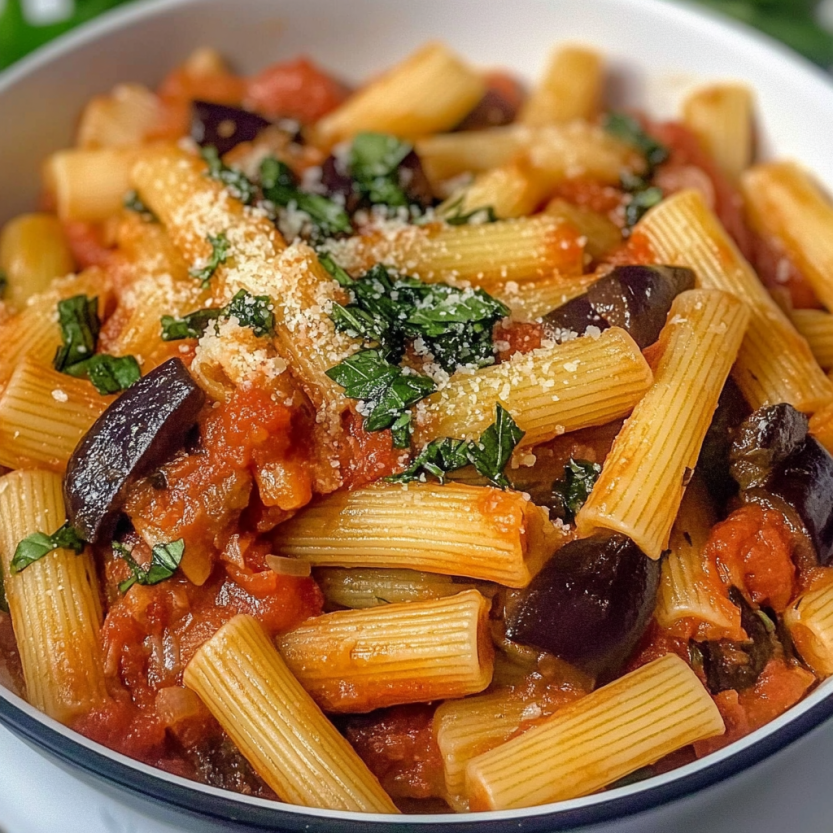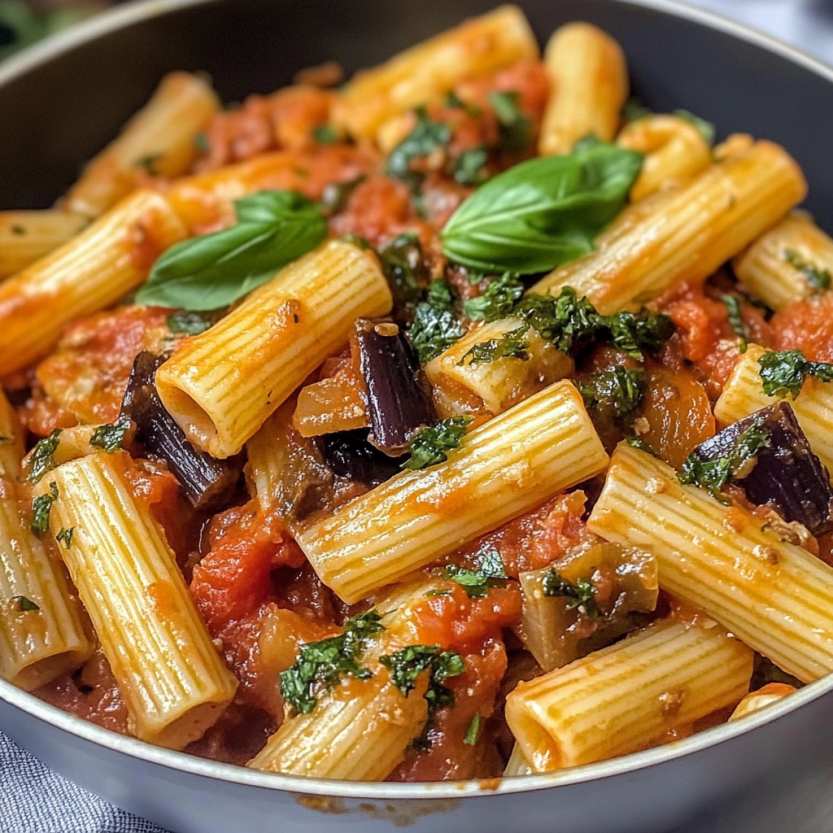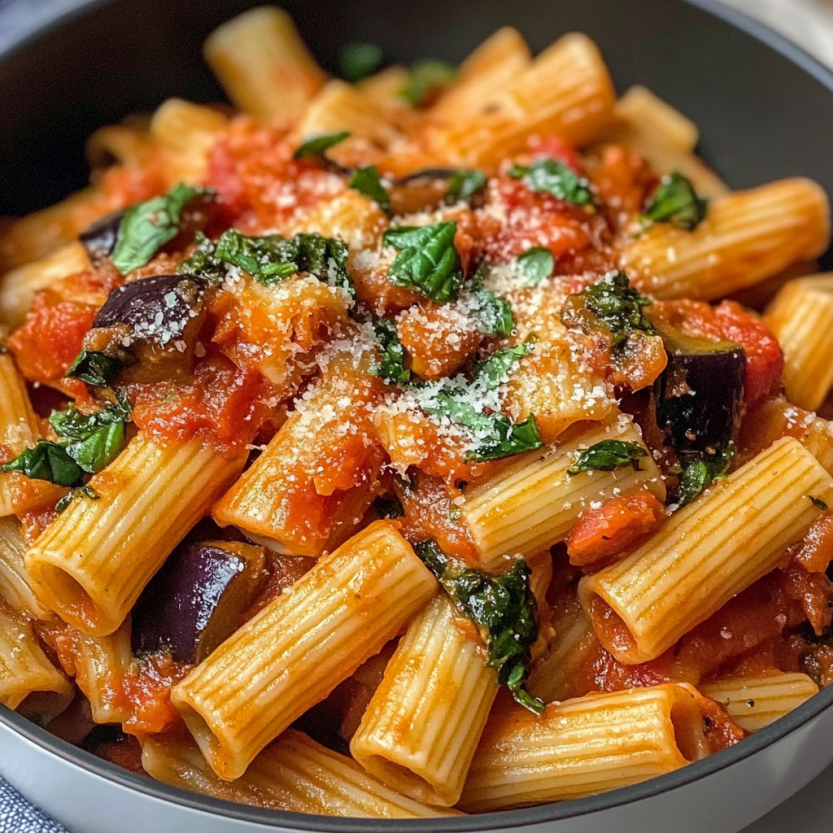 Save
Save
This hearty Sicilian pasta dish has been a cherished part of my Mediterranean cooking repertoire for years. Pasta alla Norma celebrates the simple beauty of perfectly fried eggplant married with a rich tomato sauce and finished with the distinctive salty tang of ricotta salata cheese.
The first time I prepared this dish was during a virtual cooking class with a Sicilian chef during lockdown. What began as a culinary experiment quickly became my go to impressive yet approachable dinner party staple. The way the eggplant melts into silky perfection still amazes me every time.
Ingredients
- Eggplants Italian varieties offer the creamiest texture and fewest seeds
- Canned peeled tomatoes San Marzano provide the richest tomato flavor foundation
- Garlic cloves fresh ones provide aromatic depth to the sauce
- Extra virgin olive oil high quality oil makes a noticeable difference in flavor
- Fresh basil leaves adds brightness and authentic Italian character
- Short pasta casarecce is traditional but rigatoni or penne also work beautifully
- Salt and black pepper basic seasonings that enhance every element
- Ricotta salata cheese the defining ingredient with its unique salty bite
Step-by-Step Instructions
- Prepare the eggplant
- Cut your eggplants into evenly sized cubes about 1 inch across. The uniform size ensures they cook at the same rate. Salt them generously in a colander and let them rest for at least 15 minutes. This crucial step draws out moisture and any bitterness. After salting pat them thoroughly dry before frying for the crispiest results.
- Create the tomato base
- Gently warm garlic in olive oil until it becomes fragrant and just barely golden. This infuses the oil with garlic flavor without burning it which would create bitterness. Add your tomatoes crushing them with a wooden spoon to release their juices. The slow 20 minute simmer allows the flavors to concentrate and meld while the basil infuses throughout.
- Fry the eggplant
- Work in small batches when frying the eggplant pieces. Overcrowding the pan creates steam instead of the golden crust we want. Each piece should have space around it. Look for a deep golden brown color that indicates perfect caramelization. The crisp exterior and melting interior creates the signature texture contrast of this dish.
- Blend the sauce
- Removing any remaining basil stems carefully blend the sauce until velvety smooth. An immersion blender keeps cleanup simple but a standard blender creates the silkiest texture. Pulse in short bursts if using a standard blender to prevent hot sauce accidents.
- Combine eggplant and sauce
- Adding half the fried eggplant directly to the sauce allows it to partially melt into the tomato creating richness and body. The 10 minute simmer helps the eggplant absorb flavors while contributing its own essence to the sauce.
- Cook the pasta
- Heavily salt your pasta water until it tastes like the sea. This seasons the pasta from within. Stopping the cooking process 2 minutes early ensures the pasta will finish cooking in the sauce absorbing flavors rather than water.
- Finish in the pan
- The magic happens in the final minutes when the pasta and sauce marry together. The splash of starchy pasta water creates a silky emulsion that helps the sauce cling to every piece of pasta. The remaining eggplant pieces maintain their texture providing delightful contrast.
- Serve with finesse
- The final presentation should showcase the various textures with visible pieces of golden eggplant on top and the distinctive white shavings of ricotta salata. This creates both visual appeal and ensures proper distribution of flavors in each bite.
 Save
Save
The ricotta salata is truly what makes this dish special. I discovered its unique flavor during a trip to Sicily where a local grandmother insisted it was the only proper cheese for Pasta alla Norma. She explained how the salted aging process transforms soft ricotta into something completely different providing the perfect counterpoint to the sweet tomatoes and rich eggplant.
Eggplant Selection Tips
Choosing the right eggplant makes a significant difference in this recipe. Look for Italian eggplants that feel heavy for their size with tight glossy skin. Avoid any with brown spots or wrinkles. The stem should be green and fresh looking not dried out. Smaller eggplants typically contain fewer seeds and less bitterness. When pressed gently with your thumb the eggplant should give slightly and then spring back. This indicates perfect ripeness for frying.
The History Behind Pasta alla Norma
This iconic dish originated in Catania Sicily and is named after Vincenzo Bellinis opera Norma as a tribute to its perfection. Created in the early 19th century it represents Sicily's ability to create extraordinary meals from humble ingredients. The combination of eggplant and tomatoes both nightshade plants that arrived in Sicily through trade routes showcases the islands position at the crossroads of Mediterranean cultures. Today it remains one of the most beloved and recognized dishes in Sicilian cuisine served in homes and restaurants throughout the region.
Storage and Reheating
This pasta dish keeps remarkably well for 3 to 4 days in an airtight container in the refrigerator. The flavors actually continue to develop over time making it possibly even more delicious the next day. When reheating add a small splash of water to loosen the sauce and warm gently on the stovetop. Avoid microwave reheating which can make the pasta gummy. For the best leftover experience reserve some fresh ricotta salata to grate over the top after reheating as the cheese loses some of its texture when warmed.
 Save
Save
Recipe Questions
- → Why do you need to salt the eggplant before cooking?
Salting the eggplant serves two important purposes: it draws out excess moisture which prevents the eggplant from becoming soggy when fried, and it helps remove any bitterness that might be present, especially in larger or older eggplants. The salt-sweating process typically takes 15-20 minutes, after which you should pat the eggplant dry before frying for optimal texture.
- → What can I substitute for ricotta salata?
If ricotta salata is unavailable, pecorino romano makes the best substitute as it provides similar saltiness and texture. Feta cheese (well-drained and crumbled) is another option, though it's creamier and tangier. In a pinch, a firm, aged parmesan can work, though the flavor profile will be slightly different from the traditional dish.
- → What type of pasta works best for Pasta alla Norma?
Short pasta shapes like casarecce (as recommended in the recipe) work beautifully as they catch the sauce in their grooves and folds. Other excellent options include rigatoni, penne, or fusilli. The key is choosing a pasta shape that can hold onto both the sauce and the small pieces of eggplant for the perfect bite.
- → Can I prepare any parts of this dish in advance?
Yes! The tomato sauce can be prepared up to 3 days ahead and stored in the refrigerator. The eggplant can be salt-sweated and fried a few hours in advance, though it's best kept at room temperature rather than refrigerated to maintain its texture. When ready to serve, simply reheat the sauce, add the eggplant, and cook the pasta fresh for the best results.
- → Is there a way to make this dish less oily?
To reduce the oil content, you can roast the eggplant instead of frying it. Toss the salt-sweated and dried eggplant cubes with 2-3 tablespoons of olive oil, spread on a baking sheet, and roast at 425°F (220°C) for about 25-30 minutes, turning halfway through, until golden and tender. This method uses significantly less oil while still developing good flavor, though the texture will be slightly different from the traditional fried version.
- → What's the origin of the name 'Pasta alla Norma'?
The dish is named after Vincenzo Bellini's opera 'Norma,' which premiered in 1831. According to culinary legend, when a Sicilian chef created this eggplant pasta dish, someone compared its perfection to Bellini's masterpiece, exclaiming 'È una Norma!' ('It's a Norma!'), referring to the opera's excellence. The name stuck, and the dish has been a celebration of Sicilian culinary tradition ever since.